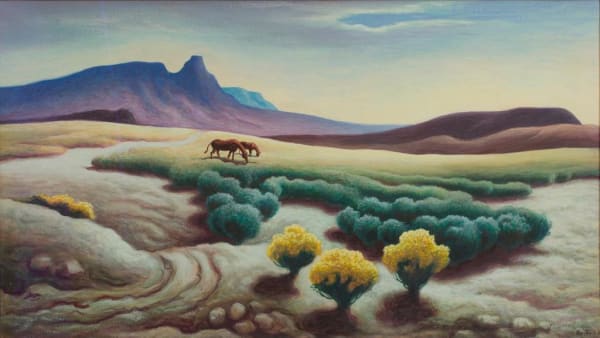Thomas Hart Benton 1889-1975
Works
Biography
Please contact the gallery for other works available by this artist.
Thomas Hart Benton was an American artist whose paintings, lithographs, and murals contributed to the Regionalist movement. Along with John Steuart Curry and Grant Wood, Benton captured rural American life during the 1920s and 1930s. His large-scale works functioned as commentaries on societal injustices. Reflecting the values of the working class, the artist often focused his attention on the plight of farmers in the Industrial Age. “I have a sort of inner conviction that for all the possible limitations of my mind,” he reflected. “I have come to something that is in the image of America and the American people of my time.”
Born on April 15, 1889 in Neosho, MO, Benton started his career as a commercial illustrator before enrolling at the Art Institute of Chicago in 1907. Moving to Paris a year later, he studied at the Académie Julian where he met and fell under the influence of the Mexican artist Diego Rivera. Returning to the United States during World War I, by the early 1920s he had distinguished himself as an outspoken opponent to abstraction. This change in attitude was inspired by a reappraisal of his Midwestern roots and a desire to make work that everyday people could appreciate.
He went on to teach at the Art Students League in New York, where one of his pupils included the young Jackson Pollock. The artist died on January 19, 1975 in Kansas City, MO, where his former home and studio are currently a historic site and museum honoring his legacy. Today, his works are held in the collections of the Art Institute of Chicago, The Museum of Modern Art in New York, and the National Gallery of Art in Washington, D.C.



